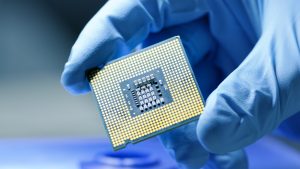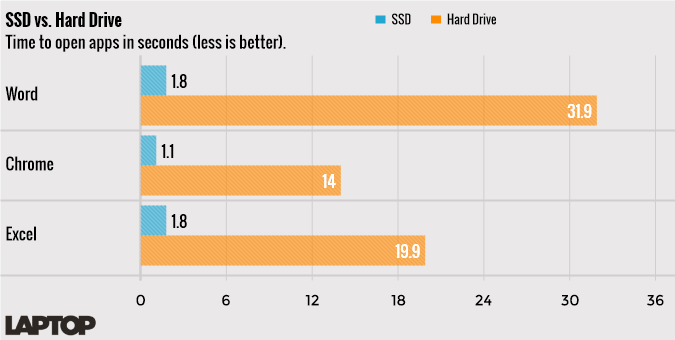
Remember that new computer feeling? Lightning fast start-up times, jackrabbit processing, and the only thing freezing were the ice cubes in your beverage glass. But over time, your computer takes longer to get going, programs run slower, and your PC starts freezing or displaying the dreaded blue screen of death.
Is it time to upgrade or replace your computer? It depends. Sometimes all you need is a bit of physical and virtual cleaning. You may even be able to get by with an upgraded processor or some additional RAM.
If you are trying to make your home as energy efficient as possible, you need to make your computer last longer. PC power consumption over the life of your machine is only about a toe’s worth of the unit’s entire carbon footprint. The real power consumption and emissions creation happen in the manufacturing process before you even take the laptop out of the box.
The Energy Involved in Technology
During its lifetime, a gasoline-powered car will consume more energy than was used to originally manufacture the car.
The same isn’t true for desktop computers, laptop computers, and gaming computers.
During the lifecycle of a computer, only about 15% of the power associated with the machine is actual power consumption by the machine. The rest is associated with manufacturing the components, the machine, and then transporting the finished product to you.
Microchips performing various functions are rammed into your laptop or desktop computer (pun completely intended). The RAM in a PC is provided by anywhere from 18 to 36 two-gram microchips. Now add to that the 2, 3, or even 4 microprocessors in a multi-processor machine and you can see that those little bitty chips start to add up fast.
Making microchips

Compared to the energy used in traditional manufacturing and production processes like casting, molding, or machining, you can see that as the scale goes down, energy consumption goes up.
Casting or molding requires between 1 and 10 megajoules of electricity per kilogram of material produced. To put that into perspective, it’s the electricity to run your big flat screen TV from between 1 and 10 hours – or less than the energy used in binging the latest season of Bridgerton.
Making semiconductors requires between 1,000 and 100,000 megajoules per kilogram of material. Now that’s enough energy to run your TV for 114 years!
Monitors, mice, and more
So far, we’ve just considered the energy that goes into making the computer chips. But hey, those chips still need a plastic case, a display screen, and accouterments to make them easier to use.
For example, the manufacture of LEDs for the screen begins with a process that takes 18.25-kilowatt hours per wafer just to manufacture the substrate wafer. Then die fabrication requires another 32.74-kilowatt hour per wafer before you ever get to actually manufacturing the monitor.
Keeping Manufacturing Facilities Cool and Clean
Now all this tech manufacturing isn’t happening in some dirty, hot, back-alley sweatshop. Whether you think Apple, Dell, or Hewlett-Packard use forced labor or questionable labor practices in their manufacturing facilities, one thing that isn’t questionable is the physical condition of their factories.
Those itty-bitty chips may hold incredibly powerful processing power, but they are weaklings in the face of dust or humidity.
Technology manufacturing facilities must be kept scrupulously clean and incredibly cool. All those air filtration and cooling devices aren’t solar-powered. They are gobbling electricity like Skittles.
Researchers looking at the energy consumed in electronics manufacturing found the carbon dioxide emissions created in the manufacture of a laptop were comparable to the emissions created by the manufacture of a refrigerator. And refrigerators last much longer than the average 3-to-4-year lifespan of a laptop.
Better Sourcing Raw Materials Doesn’t Save Energy
We haven’t even looked at the energy required to extract the raw materials to manufacture the chips, rechargeable batteries, and plastics in the case or keyboard. Research in the Journal of Cleaner Production found that the carbon emissions from raw materials extraction only amounted to about 10% of the energy required to manufacture a laptop computer.
In other words, to paraphrase Bill Clinton, “It’s the processing, stupid.” Green materials extraction and recycling don’t reduce energy consumption in computer manufacturing because it’s the processing and the facilities’ requirements that create a massive carbon footprint.
Smaller transistors require cleaner silicon, but that’s irrelevant to the overall equation because the energy-consuming processing stays the same.
So, the only way to reduce the energy consumption associated with the computer over its lifecycle is to increase the lifecycle.
How Long Should a Computer Last?
Now that you understand how much energy is involved in technology manufacturing, you may find yourself wondering, “will I ever buy another laptop?”
You probably will. How long your computer lasts really depends on the computer you buy and how the computer is used.
Low-cost laptops
If you pay in the $600 to $700 price range and do basic office tasks (email, spreadsheets, word documents, etc.), you can get 3 to 5 years from your laptop. Buy the best hardware you can afford, and you’ll get the longest life.
Mid-range laptops
If you use your laptop for serious graphics and video editing, you’ll spend more on your machine, but you can expect it to last longer.
When you pay in the range of $700 to $1000 you can expect your machine to last 4 to 7 years.
Gaming PCs
If you are seriously into gaming and are always looking for the latest technology, you can try to get up to three years out of your computer. Some folks will tell you to upgrade every year. Those people just don’t understand the impact of tech on the planet’s resources.
To maximize the life of a gaming computer, keep your fans running and even consider installing additional fans to keep your computer cool. Remember heat damages tech. Upgrade components instead of replacing the entire computer and you may get more than 3 years.
Glorified web browsers
If you use your laptop to surf the web, play Wordle, and video chat with your grandchildren, you’ll find your laptop will last many years. Your laptop will probably only become obsolete when new technology no longer supports your operating system.
Keep Your Computer Running Longer
To reduce your tech carbon footprint, make sure you get every second of processing life from your equipment. When processing times slow down, it’s time to Marie Kondo your tech. Get rid of the apps you don’t use, keep what sparks joy, and go do a thorough Spring cleaning of your laptop or desktop computer.
Cleanliness Is Key
Take a page from the book of the tech manufacturers. Keep your laptop and desktop as clean and free of dust as possible.
Run an energy-efficient HEPA air cleaner in your home office to remove free-floating dust particles before they can contaminate your machine.
A little canned air goes a very long way in keeping your unit clean. Use it to clean keyboards and ports.
Keep it cool
For desktop computers or towers, make sure there’s plenty of airflow around the machine. This helps the unit run cooler. Don’t obstruct the area around your computer’s fan. Also, don’t use your laptop outside in the sunshine when it’s 90 degrees.
If you are hot, your laptop is even hotter. A hot processor operates slower, so it operates longer, and that drives your PC power consumption higher. Heat also has a negative effect on your battery life.
De-clutter your computer
The more programs and apps you have on your laptop, the more energy it uses. Even if a program isn’t being actively used, it is lurking in the background sipping energy.
Uninstall the software you don’t use. When you get a push notification that an update is available, ask yourself if you use the app. Removing unused apps and programs frees up disk space and other computer resources.
When your computer starts slowing down at start-up, it’s time to de-clutter your start-up processes. Evaluate the programs that launch every time you start your computer. Are they all necessary at startup? If not, changing them to launch on demand will speed up the time it takes for your laptop or desktop to start up.
Remove files you don’t need and move large files to cloud storage.
Once you’ve done some Spring cleaning to your machine, run your Disk Cleanup utility to defrag or optimize your hard drive.
Add a solid-state drive
If your start-up time still lags and apps launch slowly, consider adding a solid-state drive. Many newer laptops come with solid-state drives. But if you have an older laptop or desktop and are looking to keep it going longer in an effort to reduce your impact on the planet, this is the ticket.
Instead of moving parts, solid-state drives use flash memory and consume less power than your traditional read/write drive with moving parts.
Just check out this comparison from Laptop Magazine.

Your app launch time is substantially less, and you are using less electricity to boot. The energy required to manufacture the tech in the solid-state drive is substantially less than the energy required for an entirely new laptop or desktop computer, so you are still ahead of the emissions-reducing game.
Add additional RAM
Some laptops have the RAM soldered to the motherboard. These laptops cannot accommodate additional RAM. However, many laptops (especially the older ones) still allow you to add additional RAM. If this is the case for your laptop (pun intended), then get cracking and add additional RAM. Manufacturing these chips uses less energy than manufacturing all the chips required in a new computer.
RAM is generally available in multiples of 4 (4GB, 8GB, etc.), and these days, RAM is very affordable.
Reducing Technology Energy Consumption
Now that you know how to make your computer last longer, let’s look at how you can reduce the PC’s power consumption while you own it. Green computer habits are more important than ever if you are working remotely. After all, your employer isn’t paying the electric bill, you are paying it.
Use energy efficient settings
Most newer computers and laptops are preprogrammed with energy-efficient settings. If you have an older device or aren’t sure about your settings, check these out.
Brightness – reduce the brightness of your screen or monitor and reduce your energy consumption.
Standby – switch to standby after 10 minutes of idle. You can set separate times for the screen and the CPU.
Screensaver – delete this energy hog. They aren’t necessary any longer and waste energy.
Bluetooth – turn this off when not in use. Otherwise, it is just burning energy.
WiFi – turn off when not in use. Even if you aren’t on the internet, keeping WiFi turned on consumes energy to keep it running in the background.
Accessories – turn off when not in use. Even in standby mode they still consume energy.
Become a vampire slayer
Many tech devices, like chargers and peripherals, suck energy even when they are turned off. Unlike a light bulb that’s off when it’s turned off, these devices continue to pull energy even when in the off position. According to Duke Energy, these devices can account for up to 20% of your home’s electricity usage.
Look at the cord for your device. If the cord has some sort of box attached, it’s a vampire. It doesn’t matter if it is a brick or a box, unplug these devices when they aren’t in use.
Don’t be afraid to turn your laptop or PC off when not in use. It won’t miss you.
Environmental Impact of eWaste
Once your laptop or desktop computer has finally given up the ghost, it is important to dispose of its carcass responsibly. Tech devices are loaded with toxic waste such as lithium, copper, and chromium. Send your tech to the dump and you’re sending these harmful substances into the air, soil, and water in the community.
When eWaste enters the normal trash stream, it may be shredded, melted, or buried. All of these methods of disposal create a public health hazard.
Fumes from burning enter the air, toxins leech into the soil during burial, and anything buried in the ground can impact the quality of groundwater.
Continue your commitment to green use of technology all the way to the end of the product lifecycle. Seek out tech recycling centers for the disposal of your laptop or desktop computers. Companies like Staples and Best Buy offer recycling programs. So, check them out when it’s time to dispose of your tech.

About the Author
Cheryl is our go-to guru for all things sustainable living. She’s on a mission to make your family and our planet thrive! With a heart as big as her passion for sustainability, Cheryl brings you the freshest insights on eco-friendly building products and energy efficiency. 🌱💡
And hey, did you hear about the eco-friendly lightbulb that went to therapy? It finally found its inner “enlightenment”! 😄 Join Cheryl on this green journey, where she’ll tackle your concerns with a smile and a sprinkle of eco-humor!

